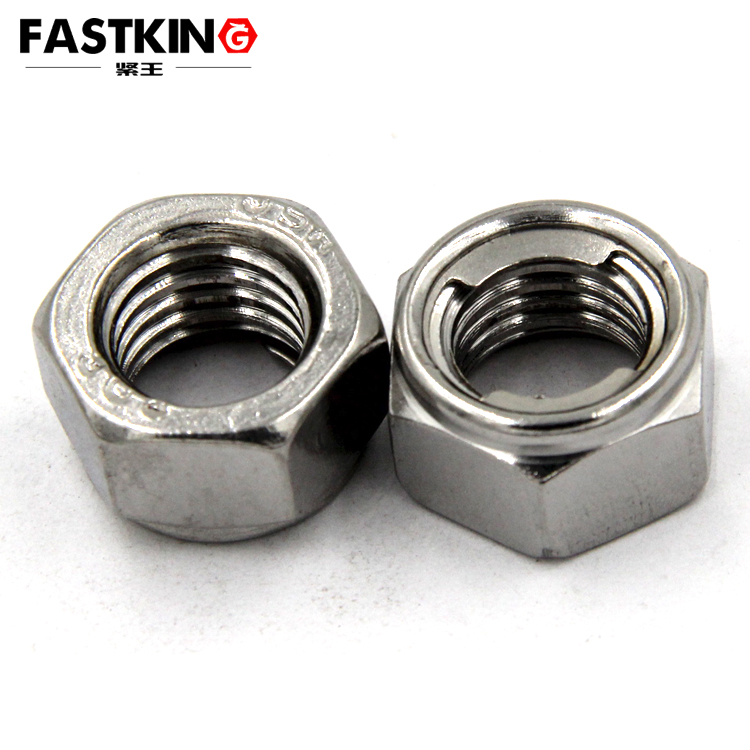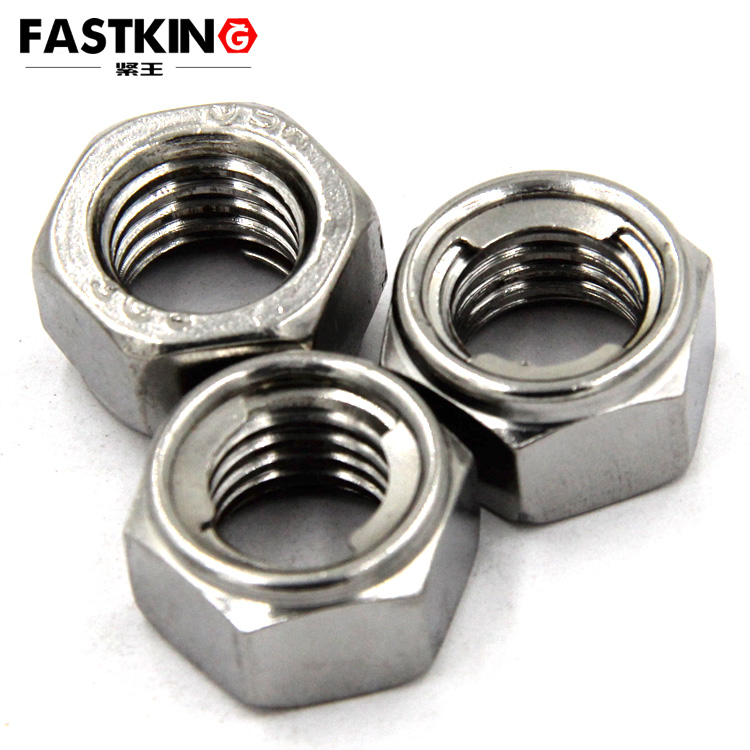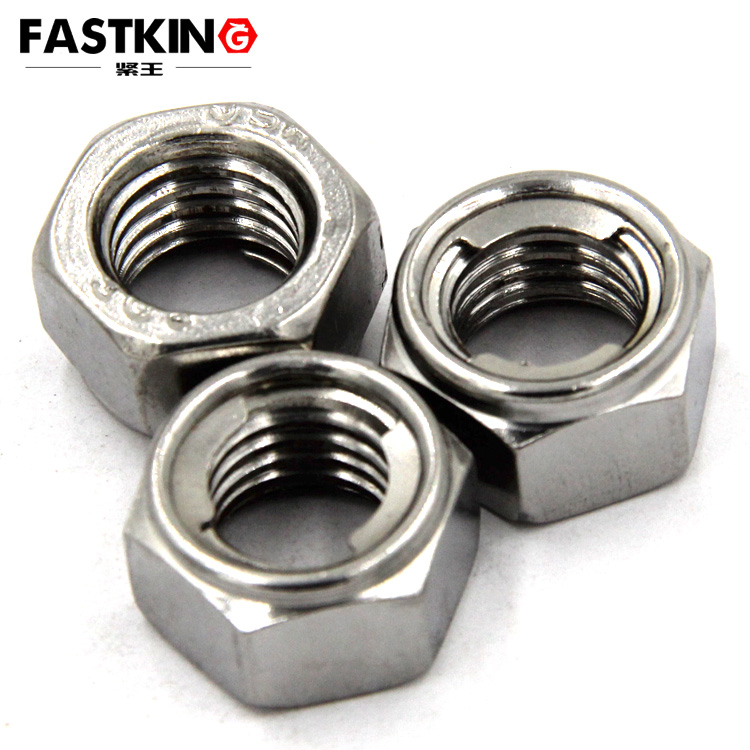In modern industry, the selection of fasteners is crucial for the stability and reliability of equipment. The all-metal locking nut defined by GB/T 6184 is a preferred fastener in many industries due to its excellent anti-loosening performance and wide range of applications. This article provides a detailed introduction to the usage methods and application scenarios of GB/T 6184 all-metal locking nuts.

Definition and Features of GB/T 6184 All-Metal Locking Nuts
(1) Definition
The Type 1 all-metal hexagonal locking nut defined by GB/T 6184-2000 is a fastener with a special locking function. This nut achieves its locking effect through an embedded metal plate. The metal plate locks the bolt thread during tightening, preventing the nut from loosening.
(2) Features
1. All-Metal Structure: Made from metal materials, the nut has high strength and good durability.
2. Locking Performance: The embedded metal plate locks the bolt thread after tightening, providing a reliable locking effect.
3. Reusable: The nut can be used multiple times without failing due to repeated tightening.
4. Adaptability: Suitable for various working environments, including high vibration, high temperature, and humid conditions.
Usage Methods
(1) Tool Preparation
When installing and removing GB/T 6184 all-metal locking nuts, appropriate tools such as wrenches or torque wrenches are required. Select the right tool based on the nut size to ensure stability and safety during operation.
(2) Installation Steps
1. Inspect Threads: Before installation, ensure that the threads of the bolt and nut are clean and undamaged.
2. Align Threads: Position the nut over the bolt thread and gently rotate it to guide it smoothly into place.
3. Tighten Nut: Use a wrench or torque wrench to tighten the nut according to the specified torque value, which is usually provided by the equipment manufacturer.
4. Check Locking Effect: After tightening, gently tap the bolt to check if the nut is loose. If it is loose, retighten it.
(3) Removal Steps
1. Loosen Nut: Use a wrench to rotate the nut counterclockwise to loosen it.
2. Remove Nut: After loosening, continue rotating counterclockwise to remove the nut from the bolt.
3. Inspect Threads: After removal, check the threads of the bolt and nut for damage. If damaged, replacement is necessary.

Application Scenarios
(1) Mechanical Manufacturing
All-metal locking nuts are widely used in the mechanical manufacturing sector, such as in automobiles, construction machinery, and ships. They effectively prevent nut loosening caused by vibration, ensuring the stability and safety of equipment.
(2) Construction
In the construction field, all-metal locking nuts are used to fasten structural components of buildings, bridges, and roads. Their high strength and durability ensure stability in harsh environments.
(3) Electronic Devices
In the manufacturing of electronic devices, all-metal locking nuts are used to fasten circuit boards and sockets. Their compact design and locking performance make them suitable for use in tight spaces.
(4) Aerospace
The aerospace industry has stringent requirements for fasteners. All-metal locking nuts are an ideal choice for aircraft and space equipment due to their excellent anti-loosening performance and reliability.
(5) Oil and Gas
In the oil and gas industry, all-metal locking nuts are used to secure critical components, ensuring the stability and safety of equipment in high-temperature and high-pressure environments.

Summary
Due to their all-metal structure, reliable locking performance, and wide range of applications, GB/T 6184 all-metal locking nuts have become indispensable fasteners in the fields of mechanical manufacturing, construction, electronic devices, and aerospace. Proper installation and removal methods, along with adaptability to working environments, significantly enhance the stability and reliability of equipment.
